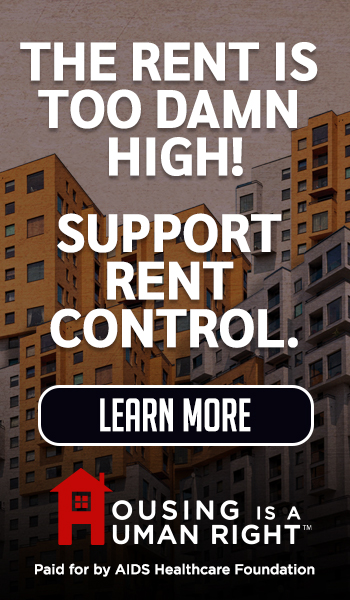Comments
HOMEOWNERS' RIGHTS - In fire-prone parts of California, a quiet but sweeping transformation is underway—one that will determine not just how we defend homes from wildfire, but how much freedom we have in our own yards.
Soon, under a new state mandate, homeowners in designated fire zones may no longer be allowed to grow a lavender bush next to their deck. A mature tree near the corner of the house may be declared a risk, even if it is well maintained, provides shade, privacy, and a place for birds. And that potted lemon tree? Too tall, too close to a window, and suddenly—noncompliant.
This is the future under a new landscape policy in the works that redefines your yard as a threat and turns private landscapes into a matter of state control.
Fear Is Understandable—But It Can’t Be the Only Guide
Given the recent Palisades and Eaton fires, it’s completely understandable that people are afraid. People want to protect their homes. They want to feel safe. And when the fire industry says “cut it all down,” many understandably assume that’s the only responsible thing to do.
But fear—while real and valid—is not a strategy. And it can lead us into false solutions.
Real safety doesn’t come from scorched-earth policies, loss of privacy, safety or rights. It comes from measured, evidence-based action that respects both the risk and the resilience of the places we call home.
Fire in the City Isn’t Like Fire in the Forest
To understand what’s wrong with this mandate, we have to start with how wildfire behaves once it enters the urban environment.
There, the dominant fuel is not plants. It’s not necessarily the maple tree or the bougainvillea in your yard. Even the iconic palms only play a role if their dead fronds aren’t removed or cleared from roofs or the ground near houses. But that’s true of any dried leaves collecting in trees or on roofs and the ground. In the urban environment, it’s the homes themselves that are the fire’s fuel—the wood siding, the attic vents, the eaves, the debris in gutters. In urban fires, flames leap from rooftop to rooftop, structure to structure, driven by wind and embers.
This is not a theory—it’s the conclusion of multiple peer-reviewed studies conducted across Southern California. And yet, the state’s new mandate focuses not on fortifying buildings or rethinking land use, but on regulating the plants in your yard—down to the inch.
Under the new landscape mandate, the landscape rules, now nearing final adoption, call for a strict thirty-foot ember-resistant zone. No plants are allowed 5 feet (Zone 0) from around the house and every other structure on or adjacent to the property. No mulch, no shrubs, and no trees unless they meet strict exemptions. No potted plants unless they are under 18 inches tall, widely spaced, in fireproof containers, and nowhere near windows. No wood fences or trellises, unless retrofitted or replaced with non-combustible materials. The state is currently considering limiting plant height to under 2 feet 5 to 30 (Zone 1) feet from the house and other structures, including your neighbor’s house or ADU.
In the Land of Density and Small Lots, Every Foot Matters
It’s easy for policymakers to imagine defensible space as a tidy ring around a sprawling rural estate—but that’s not the reality in places like Los Angeles.
For many Los Angeles homeowners, 30 feet from the house is the whole yard or most of it. In densely built neighborhoods with small lots—some under 5,000 square feet—these new rules will radically reshape what’s possible in urban and suburban landscapes, replacing gardens and green privacy with concrete and gravel fish bowls.
And this isn’t just about aesthetics. These rules could lead to the widespread removal of shade trees, mature hedges, and protected species—plants that block wind-driven embers, offer cooling, privacy, safety, wildlife habitat, slope stability, and emotional attachment. And yet, they are being swept aside with no analysis of how these changes will affect urban ecology or livability.
What’s being sold as a technical fire safety measure is, in practice, a sweeping mandate over personal space and property rights—especially for residents who lack the luxury of large setbacks and deep lots, or deep pockets for expensive landscape changes.
One begins to wonder: Is this policy really about safety?
A Bad Policy Written by The Insurance and Fire Industry for the Insurance Industry and Fire
A telling moment came during public comment at a recent Zone 0 Regulation Advisory Committee workshop sponsored by CalFire, Department of Forestry, and Insurance Institute, when environmental scientist and urban ecologist Dr. Travis Longcore listed numerous peer-reviewed studies that challenge the assumption that vegetation near homes is the primary cause of structure loss in wildfires.
After citing this body of work, he was asked by the committee to provide them with a bibliography. It was shocking that a committee developing a sweeping statewide vegetation policy hadn’t already reviewed the relevant science.
It is astounding that peer-reviewed research wasn’t the starting point for this rulemaking. That, the state’s fire regulation committee is writing rules for our properties without ever reading the science. That’s not public safety—that’s negligence.
The justification for the landscape mandate relies heavily on white papers and internal reports from the Insurance Institute that are not peer-reviewed and not grounded in real-world fire science. By contrast, numerous peer-reviewed studies on wildfires in Southern California, including research from the Santa Monica Mountains and San Diego County, show having plants within 30 feet of structures was not a strong predictor of home loss in urban fires. In actuality, building materials and the closeness of houses to each other were the most significant factors for losing a home to a fire. Moreover, unlike structures, well-maintained trees can reduce fire risk, especially when those trees are California oak trees.
The mandate also ignores the current evidence that large destructive urban fires such as Eaton and Palisades behave differently than wildland fires, with homes becoming the primary fuel as fire spreads rapidly through densely populated neighborhoods burning house to house, not tree to tree.
So why is the state pushing this cut it all down policy?
Follow the Money—and the Politics
One reason may be political convenience. Focusing on individual homeowners’ vegetation is politically easier than tackling harder systemic issues, like restricting development in fire-prone areas, enforcing building codes and building code upgrades, funding home hardening retrofits, confronting the influence of the insurance and development industry.
Cutting down plants becomes a kind of regulatory theater—visibly strict, technically complex, but largely ineffective in stopping the kinds of fires that destroy entire neighborhoods in dense cities. It also offers developers and state agencies a “get out of jail free card.” Want to build in a high fire zone? Just promise to comply with the landscape zone mandate and check the box that says vegetation removal complete.
In short: the State is pushing a sweeping vegetation removal policy that has no clear scientific foundation—and a long list of unintended consequences, which have yet to be considered.
Yes, Some Yards Need Work—But That’s Not What This Is About
To be fair, some yards in fire-prone areas are flammable messes. Overgrown, unmaintained, planted with dry ornamental species or, worse, covered in flammable synthetic turf that melts in heat. We do need smarter landscaping.
But the mandate does not distinguish between a neglected lot and a carefully designed, well-watered native garden with oak trees. It treats all plants as hazards.
What we need instead is ecological literacy, not the vegetation apocalypse. Home hardening incentives, not draconian landscape mandates. Peer-reviewed science, not insurance-industry white papers. Regional nuance, not a prescriptive mandate.
What Happens When Private Yards Become a Mandate Compliance Zone?
There is something deeply personal about the space just outside the door. It is where we plant stories, memories, and futures. The idea that this space—once shaped by care, culture, and climate—will now be dictated by a mandate is not just bureaucratic overreach. It’s a loss of autonomy, of beauty, and of trust in public institutions.
It also raises serious equity questions. Who can afford to comply? Who will be fined or cited? Who will bear the cost of removing trees, installing non-combustible features, and replacing beloved gardens with barren zones?
And when the next fire comes—and it will—how many homes will burn, not because a lemon tree stood too close to the side of the house, but because we focused on the lemon tree instead of urban planning and ignition sources.
The question isn’t whether we need to adapt. The question is whether we can do it with nuance, humility, and intelligence—or whether we’ll clear cut ourselves into to a gravel fish bowl.
Top photo: One of the “success” story landscapes presented at the April 7, 2025, Zone 0 workshop. Despite all the cleared vegetation, this home is listed as "currently uninsured." Even the gravel-scaped yard apparently doesn’t satisfy the insurance industry.
(Diana Nicole is an accredited ecological horticulture professional and tree expert. She is known for advancing scientific and practical approaches to landscape design and land care. The Walt Disney Company has been among her Fortune 100 and Fortune 500 clients. She has provided professional services for the largest residential real estate development and management corporations in the nation, non-profits, and private property owners in fire-prone areas for over 20 years.)






